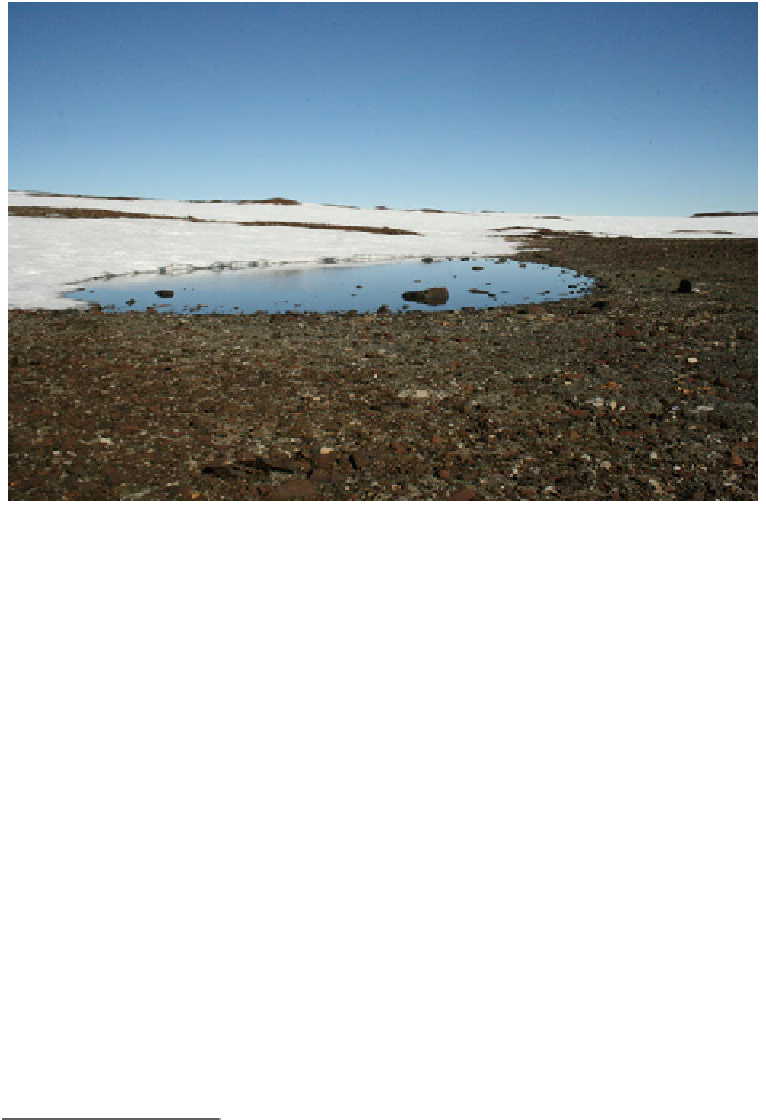Geoscience Reference
In-Depth Information
Fig. 6.5
An epiglacial pond on top of Basen nunatak, Dronning Maud Land
alpine epiglacial lakes have caused losses of human life and economical damages (e.g.,
Huss et al. 2007). Melting of Himalayan glaciers is also producing new lakes (Raj 2014)
that will have impacts on the water resources in Southern Central Asia.
In Antarctica, when the ice sheet withdrew after the Last Glacial Maximum depressions
were exposed in the landscape. These depressions were
filled with water, the lakes were
colonized by a range of organisms, and they began to accumulate the sediments that today
reveal their history. In some rare areas lakes survived intact through the Last Glacial
Maximum, for example, the Larsemann Hills and the Schirmacher Oasis, and in the
McMurdo Dry Valleys, lakes have lifetimes for over 300,000 years. Lakes on the sub-
antarctic and peri-antarctic islands are often of Holocene
2
age, formed during the retreat of
local ice masses and cirque glaciers.
The physics of epiglacial lakes is not much different from
lakes. Characteristic
to epiglacial lakes is that the water balance and water quality are governed by glacial
meltwater. Consequently, the in
'
normal
'
fl
ow has a remarkable seasonal variability, and the tem-
perature of the in
low. water is always low. If part of the lake shoreline is ice, it makes a
strong boundary condition controlling the temperature of the lake, possibly also creating
thermohaline circulation. It makes a big difference whether an epiglacial lake is peren-
nially or seasonally covered by ice, as in the case of the normal lakes.
fl
2
The geological epoch, which started about 12,000 years ago and continues at present.


Search WWH ::

Custom Search